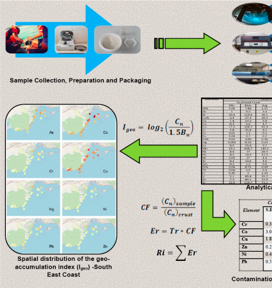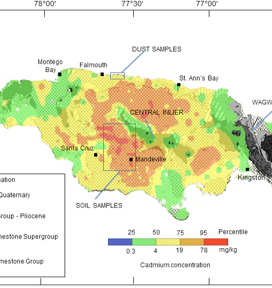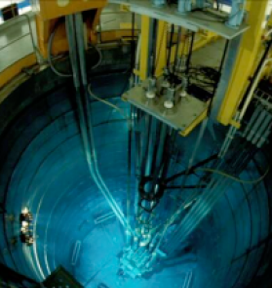
The three main laboratory sections of ICENS collaborate in multidisciplinary work on the following topics, taking part in the successive stages of field sampling, sample preparation, laboratory analysis, data handling and interpretation and dissemination of information online or as hardcopy publications.
“ICENS: The First Twenty Years: 1984 to 2004” gives a full account of the first period of our operations and our capabilities and is available for download as a 18.3 Mb file from: http://eshare.uwimona.edu.jm/icens-20-year-report.pdf

A manuscript prepared by Ms Jhénelle Williams and Mr Johann Antoine was accepted in May 2020 to be published Marine Pollution Bulletin.

A collaboration between Dr Adrian Spence, Dr Donovan Campbell and Mrs Tiffany Wallace saw the scientists collecting soil cores in the Blue Mountains for erosion analysis and inventory to identify soil mass as well as nutrient loss. The team also evaluated gas flux measurements in the area.

Large areas (>500 km2) of Jamaica are uniquely characterized by soils containing more than 50 mg kg-1 Cd, several orders of magnitude greater than what is typically expected for pedo-geochemical levels of the metal.

The 2014–2015 academic year was a pivotal year for ICENS, after 31 years of operation of the SLOWPOKE-II research reactor the US Department of Energy agreed to convert the core reactor from Highly Enriched Uranium (HEU) to Low enriched Uranium (LEU). The 17th of July, 2015 marked the last day of operation of the SLOWPOKE-II reactor with HEU fuel.

The Jamaican SLOWPOKE-2 Research Reactor (JM-1) is a 20 kW tank-in-pool type reactor designed by the Atomic Energy of Canada Ltd (AECL) and was commissioned in 1984 with highly enriched uranium (HEU) fuel. In 2015, the HEU fuel was removed from the reactor, shipped back to the U.S. and replaced with a low enriched uranium (LEU) fuel core.